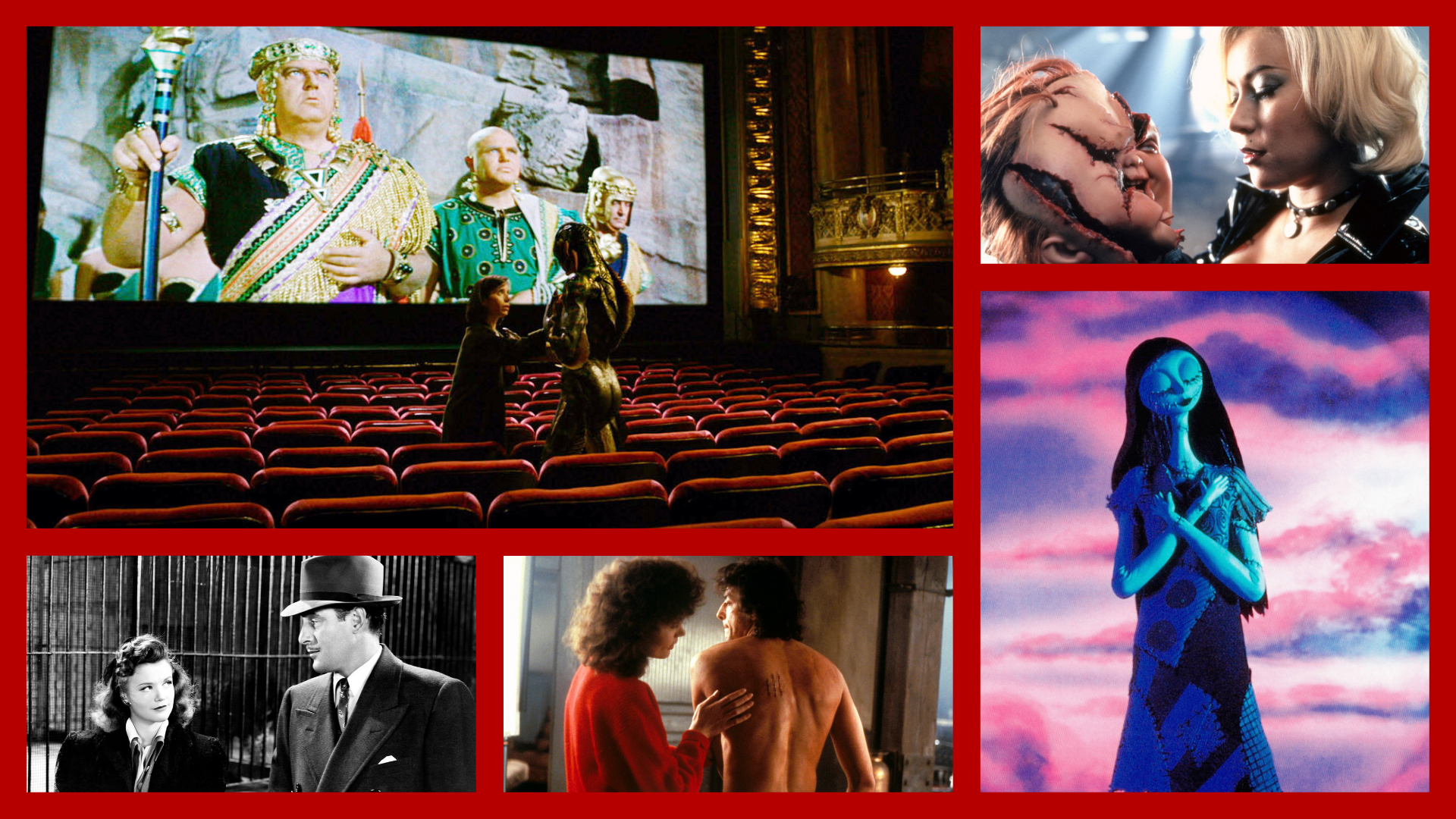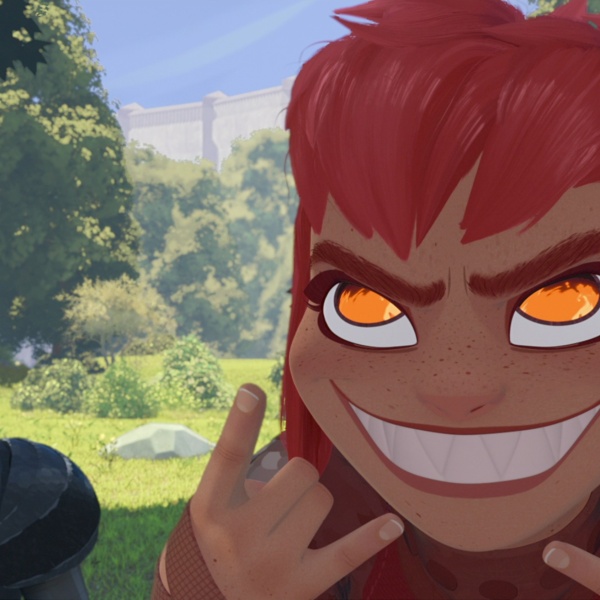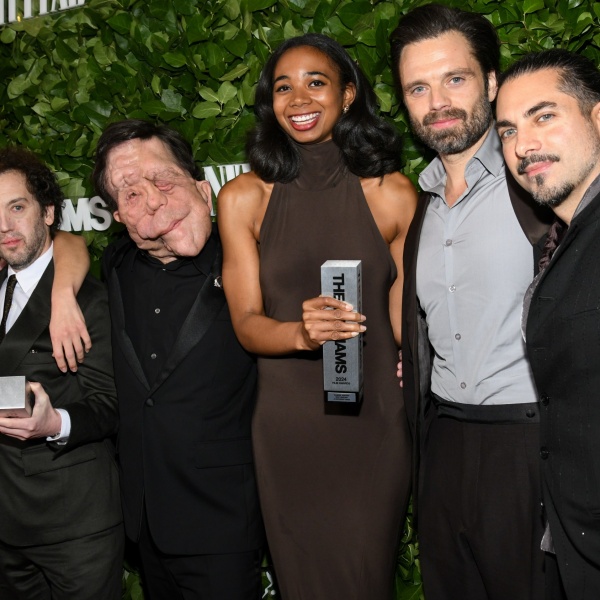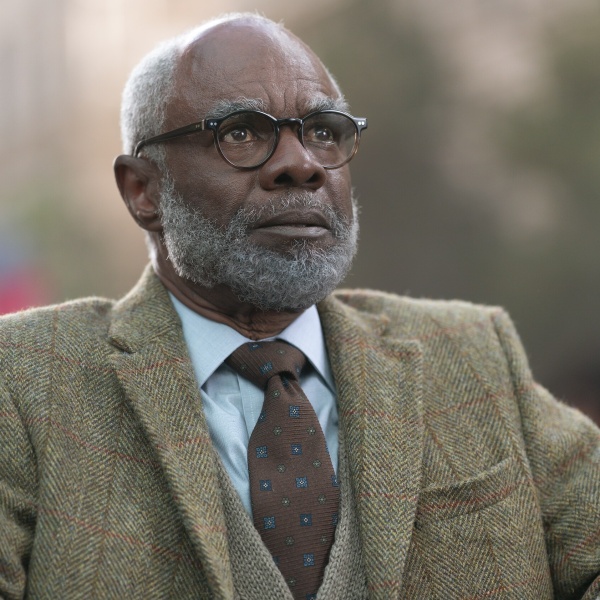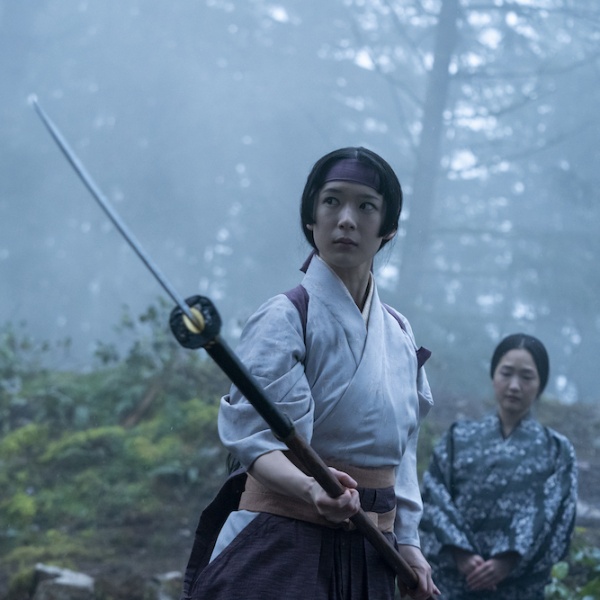[Editor’s Note: this list was originally published in October 2023. It has since been updated with new entries.]
Valentine’s Day may be a day of love, but there’s something about fear and murder that really gets the heart racing. Forget the countless Christmas rom-coms or Technicolor musical romances out there; sometimes, the most swoon-worthy romance is one between a human and a literal monster.
On the surface, horror and romance are two genres that shouldn’t mix well together; one exposes the worst and most disturbing cruelty humanity has to offer, while the other is meant to show the most tender and beautiful feelings we have. But as long as horror has been a genre, it’s been mixed with romance to frequently stellar results. Some of the earliest horror monsters, like vampires, are inherently sexual beings: their powers clear metaphors for intercourse and their ability to allure and entice humans with their beauty a key part of what makes them dangerous. Sex and romance isn’t always the same thing, of course, but with fear and desire already intertwined in the horror genre, romances that used gothic trappings and creatures of the night as their villains were inevitable. Love and terror are, after all, two emotions that get the heart racing — albeit for two very different reasons.
If there’s a film that can be regarded as the first horror romance, one might need to look at “Bride of Frankenstein.” The original 1931 “Frankenstein” was a massive success, though one that only loosely adapted the Mary Shelley novel. But with “Bride,” Universal Pictures and director James Whale incorporated many elements of the original that were left out, including the lab-created monster’s desire for a female companion. Boris Karloff’s monster doesn’t quite get the results he wants in the film, but “Bride of Frankenstein” still helped to establish the two questions that would define spooky romances for decades to come: Can a monster truly love? And, more importantly, can anyone ever learn to love them in return?
Since then, many, many movies have tackled that question, in their own ways. There have been adaptations of “Beauty and the Beast,” the original monster love story. There have been riffs on “Bride of Frankenstein” — like “Bride of Chucky” and “Bride of Re-Animator” — and original spooky romances, like “Edward Scissorhands” and “Only Lovers Left Alive.” These films and their love stories resonate because, frequently, they have higher stakes than your straightforward, regular-human-on-regular-human romances, asking questions about the nature of love and true devotion that strike deep in the heart.
With Valentine’s Day upon us, we decided to gather some of the spookiest romance films of the horror canon. Entries are unranked and listed in chronological order, and we limited ourselves to one film per director (sorry Guillermo del Toro, and remember that Tim Burton did not direct “The Nightmare Before Christmas”). There are plenty of honorable mentions, including: “An American Werewolf in London,” “Warm Bodies,” “Let the Right One In,” “Bones and All,” and many more.
Read on for the 18 greatest spooky romances in cinematic history.
-
“Bride of Frankenstein” (dir. James Whale, 1935)

Image Credit: Courtesy Everett Collection Who romances who: James Whale’s campier, stranger, and altogether superior sequel to the definitive 1931 film adaptation of Mary Shelley’s “Frankenstein” takes a minor plot point from the original novel and spins an entire Greek tragedy out of it. After Frankenstein’s Monster (Boris Karloff, in his iconic role) disappeared at the end of the last film, he resurfaces and returns to his master (Colin Clive) with an unusual request: to create a female monster who would be capable of loving him.
How their romance sours: In recent years, “Bride of Frankenstein” has been widely appraised as a queer film, with analysis focusing on the Monster’s search for a companion as a metaphor for the struggles of queer people to find love in a world that rejects them. So it’s no surprise that his attempts to mold Elsa Lanchester’s iconic Bride into a woman that will love him only end in heartbreak and tragedy, a bitterly sad ending that remains potent decades later.
-
“Cat People” (dir. Jacques Tourneur, 1942)

Image Credit: Courtesy Everett Collection Who romances who: It’s your classic, all-American romance: he (Oliver as played by Kent Smith) is a straight-arrow marine engineer, she (Irena Dubrovna, played by Simone Smith) is a fashion designer from Serbia who believes herself to be descended from an ancient tribe of Cat People who transform into black panthers from any sexual contact. What could go wrong?
How their love sours: A lot could go wrong, it turns out! Jacques Tourneur’s landmark film, which established a prioritization of suspense over creature effects that would prove influential for many horror movies of the time, focuses on Irena and Oliver’s doomed romance, which hits a snag pretty early after they marry, on account of Irena refusing to consummate it so she doesn’t turn into a panther. That leads to Oliver’s heart straying to his assistant Alice (Jane Randolph), and Irena’s sanity slipping — especially when it turns out her “delusion” about her heritage is actually totally right. It all leads to a tragic finale, as ultimately boy and cat girl are unable to exist happily together.
-
“I Married a Witch” (dir. René Clair, 1942)

Image Credit: Courtesy Everett Collection Who romances who: Before “Bewitched,” René Clair brought witchcraft to the rom-com genre with “I Married a Witch,” which tells a screwball story with a demented supernatural bent. Veronica Lake stars as the shrewd witch Jennifer, who was burned at the stake by Puritan Jonathan Wooley (Fredric March). As she dies, Jennifer curses the Wooley line, dooming the men to marry cruel women for eternity. When Jennifer resurfaces as a spirit, she sets her sights on seducing the latest Wooley Wallace (also March), who is running for governor.
How their love sours: More like how their love becomes a thing in the first place. In an attempt to make Wallace fall for her, Jennifer attempts to get him to take a love potion but ends up drinking it herself. Now totally besotted, she marries him and betrays her warlock father (Cecil Kellaway) in order to live happily ever after — at least until their kids end up picking up sorcery themselves.
-
“Blithe Spirit” (dir. David Lean, 1945)

Image Credit: Courtesy Everett Collection Who romances who: More like, who is romancing someone against their will? An adaptation of Noël Coward’s classic farcical play, “Blithe Spirit” stars Rex Harrison as Charles, a writer working on a novel about the occult. As a lark, he invites medium Madame Arcati (Margaret Rutherford) for a séance, only for the joke to backfire on him majorly when he gains the ability to see the ghost of his dead first wife Elvira (Kay Hammond). Elvira wants to reunite with Charles in the afterlife, but there’s a slight hiccup; he’s remarried to a second woman, Ruth (Constance Cummings).
How their romance sours: “Blithe Spirit” is more funny than romantic, so it’s no surprise that nobody in its toxic central love triangle ends up particularly happy. What’s genius about the film is how it uses its ghostly conceit as a metaphor for how past relationships can haunt us, as Charles’ relationship with Ruth sours due to the efforts of Elvira. Things get worse for him before they get better in the film, and by the end Elvira isn’t the only blithe spirit haunting his manor.
-
“Beauty and the Beast” (dir. Jean Cocteau, 1946)

Image Credit: Everett Collection / Everett Collection Who romances who: Do we even need to say who Beauty and the Beast are? Jean Cocteau’s atmospheric adaptation of the classic fairy tale stars Josette Day as the gorgeous but kind-hearted Belle, who selflessly agrees to take her father’s place when he gets trapped in the haunted castle of a furry Beast (Jean Marais). The castle is pretty spooky, with a lot of hands in the walls, but the Beast is actually a gentleman and begins gently courting Belle for her hand in marriage.
How their love sours: Not much goes wrong between Belle and Beast, but their courtship is nearly ruined by the schemes of Belle’s handsome but selfish suitor Avenant (Marais, pulling double duty), who becomes determined to kill the Beast and have her all to himself. Luckily, his plan is foiled and Beast is able to break the curse that turned him into a monster, returning to the form of a studly prince. In the grand tradition of “Beauty and the Beast” adaptations (see the 1990 Disney version), your mileage may vary on whether the Beast is hotter in or out of the fur suit.
-
“Ganja & Hess” (dir. Bill Gunn, 1973)

Image Credit: Kino Lorber Who romances who: A low-budget classic, “Ganja & Hess” is a tragic vampire story about two lovers in terrible circumstances. Hess (Duane Jones, best known for “Night of the Living Dead”) is an anthropologist who becomes a vampire after getting stabbed by his assistant with an ancient cursed dagger. Ganja (Marlene Clark) is his assistant’s wife, who quickly falls for the handsome and wealthy man to such an intense degree that she marries him after finding her old husband’s frozen corpse in his wine cellar. Hess turns Ganja into a vampire, and the two quickly take to stalking the night for human prey.
How their love sours: Vampirism just isn’t for everybody. Although Ganja adapts quickly to her new life, Hess grows depressed and disillusioned about the existence of a bloodsucker and decides to kill himself by standing in front of a cross. Ganja grieves him but continues on in her own vampiric lifestyle.
-
“Phantom of the Paradise” (dir. Brian De Palma, 1974)

Image Credit: ©20thCentFox/Courtesy Everett Collection Who romances who: Depending on how you look at it, Gaston Leroux’s novel “The Phantom of the Opera” is either a classic horror love story or one of the most famous stalking stories in English literature. Brian De Palma’s “Phantom of the Paradise” leans into the romance argument, but updates the setting from a French opera to a rock concert hall in the ’70s. The Phantom figure is Winslow Leach (William Finley), whose music is stolen by a corrupt record producer and ends up hideously disfigured. Hiding in the Paradise, he writes a gorgeous rock opera for his true love, newly minted star Phoenix (Jessica Harper).
How their romance sours: “The Phantom of the Paradise” puts poor Winslow through hell, as the writer and romantic gets his dreams stolen away. But even though the film ends tragically, De Palma allows Winslow one final moment of happiness before he sings his last note.
-
“The Fly” (dir. David Cronenberg, 1986)

Image Credit: ©20thCentFox/Courtesy Everett Collection Who romances who: In David Cronenberg’s acclaimed remake of the original 1958 sci-fi horror film, Jeff Goldblum is eccentric scientist Seth, whose endearing awkwardness and shockingly hot bod charms journalist Ronnie (Geena Davis). Seth is working on cracking the code on how to achieve teleportation, and his attempt to teleport himself initially works perfectly. But he misses that a housefly entered the teleporter pods with him and the process scrambles his DNA in increasingly disturbing ways.
How their love sours: “The Fly” famously used “Be afraid… Be very afraid...” as its tagline, but considering how the film ends, “Be sad… Be very sad...” might have been more fitting. As Steve loses his sanity after the experiment’s effects, he drives Ronnie away and eventually attempts to use the teleporter to mutate himself, her, and their unborn child into a single entity in order to become “the ultimate family.” His plan gets foiled, and he fully loses his mind by transforming into an insectoid creature that Ronnie has to put down in one of the most tragic film endings of the ’80s.
-
“Little Shop of Horrors” (dir. Frank Oz, 1986)

Image Credit: ©Warner Bros/Courtesy Everett Collection Who romances who: Unlike most of the movies on this list, the two central figures in the “Little Shop of Horrors” love story are very much human. Seymour (Rick Moranis) is a nerdy florist and orphan taken in by the grumpy owner of a Skid Row flower shop, while Audrey (Ellen Greene, reprising her role from the stage musical) is his shy but gorgeous coworker. But in his attempt to woo Audrey, Seymour makes many morally dubious decisions; mainly, making a Faustian bargain with a sentient carnivorous plant and allowing it to feed on human blood in order to turn the flower shop into a success.
How their romance sours: In the theatrical cut, it doesn’t. The film version of “Little Shop of Horrors” infamously changed the musical’s tragic ending into a happily ever after for Seymour and Audrey, after test audiences responded negatively to the “kill ’em all” finale. But the original film ending was restored and included as a bonus feature on the film’s 2012 DVD rerelease, allowing fans to experience the tragedy in this tragicomic romance.
-
“Bride of Re-Animator” (dir. Brian Yuzna, 1989)

Image Credit: 50th Street Films/courtesy Everett Collection Who romances who: Brian Yuzna’s sequel to the popular “Re-Animator” is a direct-to-video take on the “Bride of Frankenstein” story, following mad scientist Herbert West (Jeffrey Combs) as he continues his research into reanimating dead people. This time, he aims his sights at bringing back to life Megan (Barbara Crampton), the fiancée of his partner Dan (Bruce Abbott) after she died in the first movie.
How their love sours: Although “Re-Animator” is a comedy, it’s still a Lovecraft adaptation, so it’s no surprise that it ends unhappily. Using Meg’s heart and the body of a dead patient, Gloria (Kathleen Kinmont ), the two create the titular Bride. The Bride is smitten with Dan, but he rejects her, and the Bride responds by ripping her heart out of her body, having no reason left for her short-lived existence.
-
“Ghost” (dir. Jerry Zucker, 1990)

Image Credit: ©Paramount/Courtesy Everett Collection Who romances who: Sam and Molly are the picture-perfect Yuppie couple, sickeningly in love and as astonishingly hot together as anyone played by Patrick Swayze and Demi Moore would be. The only thing that could kill their love is literal death. But even that doesn’t totally work, as Sam comes back as a ghost after a murder to save Molly from the killer.
How their romance sours: Despite the little issue of being, well, dead, Sam is able to enlist the help of a fraudster medium (Whoopi Goldberg) with real powers to reconnect and say goodbye to Molly before his departure. It makes for a slightly corny but undeniably moving romance, even if the steamiest scene (that legendary pottery session) happens while both members of the couple still have a pulse.
-
“Edward Scissorhands” (dir. Tim Burton, 1990)

Image Credit: ©20thCentFox/Courtesy Everett Collection Who romances who: Tim Burton’s goth and emo classic is the love story of a small-town suburb girl and a boy with scissors for hands. The titular Edward Scissorhands (Johnny Depp) is the artificial creation of a mad scientist, left to rot after the scientist died while creating him. Once he’s discovered by door-to-door saleswoman Pegg (Dianne Wiest), she takes him home, where he becomes a bit of a local celebrity and falls madly in love with her gorgeous daughter Kim (Winona Ryder).
How their love sours: The only issue? Kim has a boyfriend, the irritable and selfish Jim (Anthony Michael Hall). Jim pulls dirty tricks to make Edward an outcast in the suburban town they live in, although Kim sees right through it and finally breaks up with him when he goes too far. After an incident where Edward is accused of purposefully harming a child, he flees to his old gothic mansion, where Jim follows with the hope of murdering him. He successfully fends off and kills Jim after he hurts Kim, but still hated by the rest of the world, spends the rest of his days in his gothic manor. Kim grows old, but the two sweethearts never meet again.
-
“Bram Stoker’s Dracula” (dir. Francis Ford Coppola, 1992)

Image Credit: ©Columbia Pictures/Courtesy Everett Collection Who romances who: Francis Ford Coppola’s lavish and lush adaptation of the world’s most famous vampire story hews closer to the original story than most film versions but completely changes the horror story’s tone by turning it into a sweeping, tragic romance. Gary Oldman’s Dracula is reimagined as a Romanian prince who turned into a vampire after losing his beloved wife Elisabetha (Winona Ryder). Over four centuries later, he meets solicitor Jonathan Harker (Keanu Reeves), whose fiancée Mina Murray (also Ryder) bears a shockingly close resemblance to the late Elisabetha and heads to London determined to make Mina fall for him.
How their love sours: The attraction between Dracula and Mina is mutual, but Mina ultimately chooses to marry Jonathan, leading Dracula to go on a rampage of heartbreak. A team of vampire hunters ultimately manages to slay the Count, but Mina kisses him as he dies and lays him to rest. And in the final shot, it’s implied that Dracula has been redeemed and is now with his beloved Elisabetha in heaven.
-
“Addams Family Values” (dir. Barry Sonnenfeld, 1993)

Image Credit: ©Paramount/Courtesy Everett Collection Who romances who: The true romance of the Addams Family is obviously Morticia and Gomez, played with alluring sexiness in the ’90s films by Anjelica Huston and Raul Julia. But “Addams Family Values” introduces a twisted love interest for the gentle Uncle Fester (Christopher Lloyd) in Debbie (Joan Cusack), a beautiful nanny to the infant Pubert. With a fondness for pastels and a bottle blonde look, Debbie is seemingly everything that the Addams aren’t; she and Fester soon fall madly in love and marry.
How their love sours: It turns out Debbie is more similar to the Addams than she looks; she’s actually a serial killer who murders rich bachelors to collect their inheritances. Luckily, the family is able to kill the killer before she offs Fester, who finds new love with the nanny for Cousin Itt (John Franklin).
-
“The Nightmare Before Christmas” (dir. Henry Selick, 1993)

Image Credit: ©Buena Vista Pictures/Courtesy Everett Collection Who romances who: In Henry Selick’s (not Tim Burton’s) “The Nightmare Before Christmas,” Jack Skellington (Chris Sarandon) is the king of Halloween Town, the man tasked with causing mischief and madness throughout October. Catherine O’Hara is Sally, the monstrous creation of a local mad scientist who is desperately in love with him. But Jack is too bored with the routine of Halloween every year to pay attention to her and instead attempts to ease his ennui by taking over the role of Santa Claus for Christmas.
How their love sours: Jack’s plan to hijack Christmas turns predictably disastrous, but the experience helps the dreamer realize that everything he needed to be happy was right in front of him all along. After defeating the villainous Boogie (Ken Page) and restoring Santa to his rightful position, Jack embraces his role as a leader of Halloween Town with Sally right beside him.
-
“Bride of Chucky” (dir. Don Mancini, 1998)

Image Credit: Everett Collection Who romances who: The fourth in Don Mancini’s series of killer doll films was an important step in the franchise for three reasons. One, it was the first to drop Andy, the main protagonist of the original trilogy, focusing instead on the psychopathic doll as the “hero” of the franchise. Second, it completed the films’ full tilt into self-parody, taking the black comedy that was present in the original and making it the main attraction. And third, it gave Chucky a partner-in-crime with Tiffany (Jennifer Tilly), Chucky’s former girlfriend from when he was a human serial killer. Still in love with the evil man, Tiffany steals the Chucky doll in an attempt to revive him, only to end up killed by her lover and revived into the body of a blonde bombshell dolly so they can cause mayhem together.
How their love sours: Now reunited in their plastic bodies, Tiffany and Chucky scheme to use the bodies of couple Jade (Katherine Heigl) and Jesse (Nick Stabile) as their new vessels. After a bizarre doll sex scene, the two almost manage to complete the incantation needed to get human bodies. But Tiffany is (slightly) softer than her beloved Chucky and ultimately betrays him after being moved by Jade and Jesse’s love. But their romance doesn’t fade after just one movie; in “Seed of Chucky” they come back, now with a baby.
-
“Only Lovers Left Alive” (dir. Jim Jarmusch, 2013)

Image Credit: Moviestore/Shutterstock Who romances who: Tom Hiddleston and Tilda Swinton are the cheekily-named vampiric pair Adam and Eve, who have been married for literal centuries. When the film starts, they’re living apart from one another (what’s a few years separated when you have eternal life?), but they’re still in love, and when Adam grows depressed by the boredom of his existence, Eve travels from Tangier in order to comfort him.
How their love sours: It really doesn’t! Sure, Adam and Eve go through some ups and downs together; Eve’s sister (Mia Wasikowska) killing Adam’s only human friend is the type of thing that causes some marital tension. But what’s moving about “Only Lovers Left Alive” is how committed the two effortlessly cool monsters at its center are to each other, and how much their love endures no matter what. And it helps that Swinton and Hiddleston are so perfectly cast as bohemian, freewheeling vampires whose lovely marriage is truly goals — minus the whole sucking people’s blood thing, of course. —WC
-
“The Shape of Water” (dir. Guillermo del Toro, 2017)

Image Credit: Fox Searchlight / Everett Collection Who romances who: Guillermo del Toro’s “The Shape of Water” was a watershed moment for freaks attracted to “The Creature From the Black Lagoon” everywhere. Here is a film about mousy, mute outsider Elisa (Sally Hawkins), who discovers a captured sea monster (played by Doug Jones) held captive in the lab where she works as a custodian. Feeling a connection to the creature, Elisa busts him out and brings him to her apartment, where she puts him in her tub for safety. The chemistry between the pair is obvious, and soon the two are engaging in some human-on-amphibian action; just don’t ask how they get down and dirty.
How their love sours: “The Shape of Water” fairly explicitly positions its central romance as an allegory for marginalized and persecuted groups; the fact that the central pair’s biggest supporter is a closeted gay man (Richard Jenkins) makes the parallels pretty obvious. But del Toro is a softie who cares too much about his characters to get in between their love, so Elisa and the fish man escape to the sea, where the fish man gives Elisa gills and the two are able to live out the rest of their lives happily.
